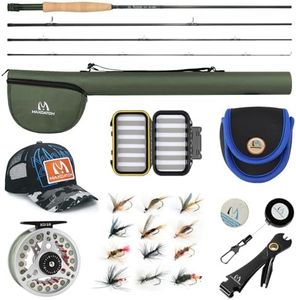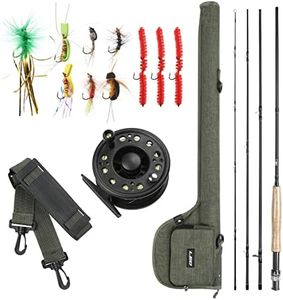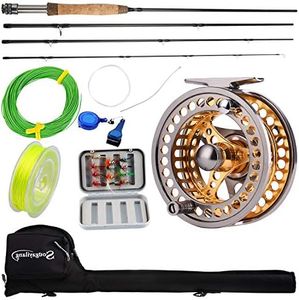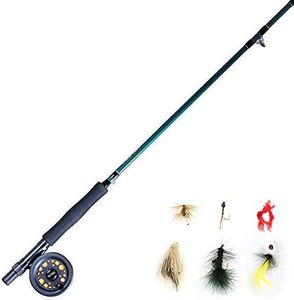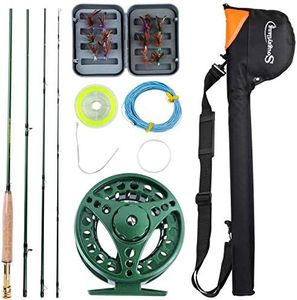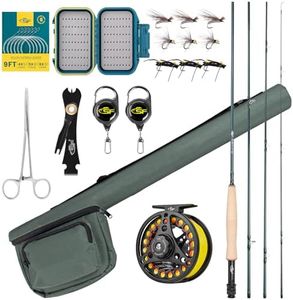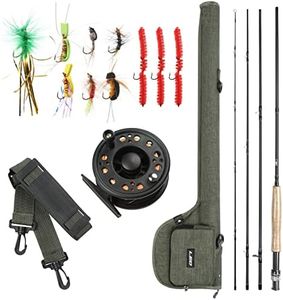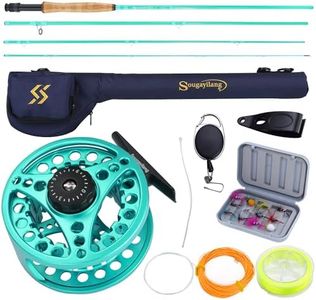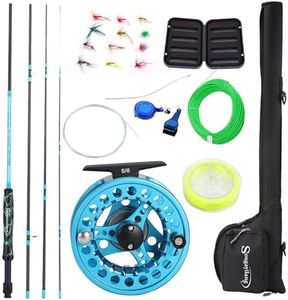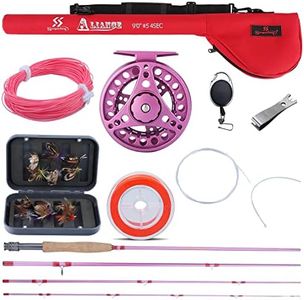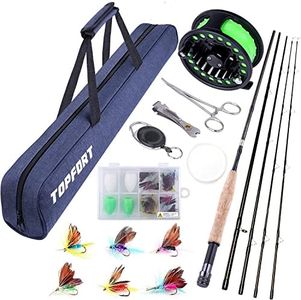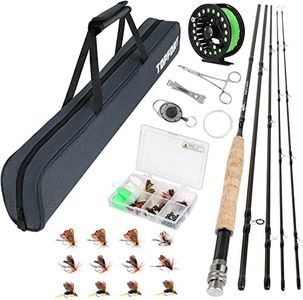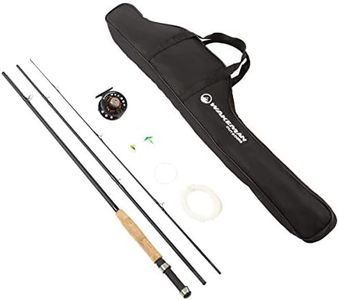We Use CookiesWe use cookies to enhance the security, performance,
functionality and for analytical and promotional activities. By continuing to browse this site you
are agreeing to our privacy policy
10 Best Starter Fly Fishing Combo
From leading brands and best sellers available on the web.By clicking on a link to a third party's website, log data is shared with that third party.
Buying Guide for the Best Starter Fly Fishing Combo
Choosing a starter fly fishing combo can feel overwhelming, but it’s all about matching the gear to the type of fishing you want to do. A combo set typically includes a rod, reel, and fly line, all designed to work together, making it easier for beginners to get started. The goal is to find a setup that’s easy to cast, comfortable in your hands, and suitable for the type of fish and water you’ll be fishing. By focusing on the main specs, you can narrow down what suits your needs best without getting lost in technical details.Rod LengthRod length is the measurement from the tip to the end of the rod, and it affects both casting distance and handling. Shorter rods, typically around 7 to 8 feet, are easier to maneuver, making them a good choice for smaller streams and confined spaces. Medium-length rods, in the 8.5 to 9-foot range, are very popular for beginners because they balance casting distance and control, working well in most situations. Longer rods, over 9 feet, are better for bigger rivers or when you need to cast a longer distance, but they can be harder to handle. For starting out, think about where you’ll fish most: if it’s small creeks, grab a shorter rod—if it’s open water or lakes, consider something around 9 feet.
Rod WeightRod weight is a measure that matches the size of the line and the type of fish you want to catch. It ranges from 1 (very light, for small fish) up to 12 or more (for large fish). For beginners, a 4 to 6 weight rod is very versatile, suitable for everything from small trout in streams (4 or 5 weight) to bass and light saltwater use (5 or 6 weight). If you’re mostly fishing for trout or panfish, a 5 weight is a safe, all-purpose choice. If you plan to pursue larger fish or fish in windy areas, you might want to go up to a 6 weight.
Rod ActionRod action describes how much the rod bends when casting or fighting a fish. Slow action rods bend more throughout the rod, which is forgiving and gentle—great for short, delicate casts. Medium action rods bend in the middle and are more versatile, making them ideal for beginners as they balance control and distance. Fast action rods mostly bend at the tip, helping with longer casts and better in windy conditions but can be harder to control for someone new to fly fishing. Most new anglers will find a medium action rod provides a good blend of ease and performance.
Reel Type and Drag SystemThe reel in a starter combo is important for holding your line and helping you reel in fish. For beginners, a simple single-action reel is easy to use and almost always included in combos. The drag system controls how much resistance a fish feels when pulling on the line; most beginner reels use a click-and-pawl or basic disc drag. Click-and-pawl is simple and enough for smaller fish, while disc drag offers smoother stopping power for larger or faster fish. For most freshwater fishing, as a beginner, you don’t need to worry about advanced drag systems—a basic drag is plenty.
Fly Line (Weight and Taper)Fly line is specially designed for casting flies and is matched to your rod’s weight. The most common type is a weight-forward floating line, which is good for learning and works for almost all types of fishing except deep water. The 'weight' of the line must match the rod weight for proper casting. As a starter, always look for combos where the line weight and rod match, which the combo typically ensures. Weight-forward lines help with casting distance and are forgiving for beginners. Floating lines, as the name says, float on the water's surface and are ideal for most entry-level fishing.
